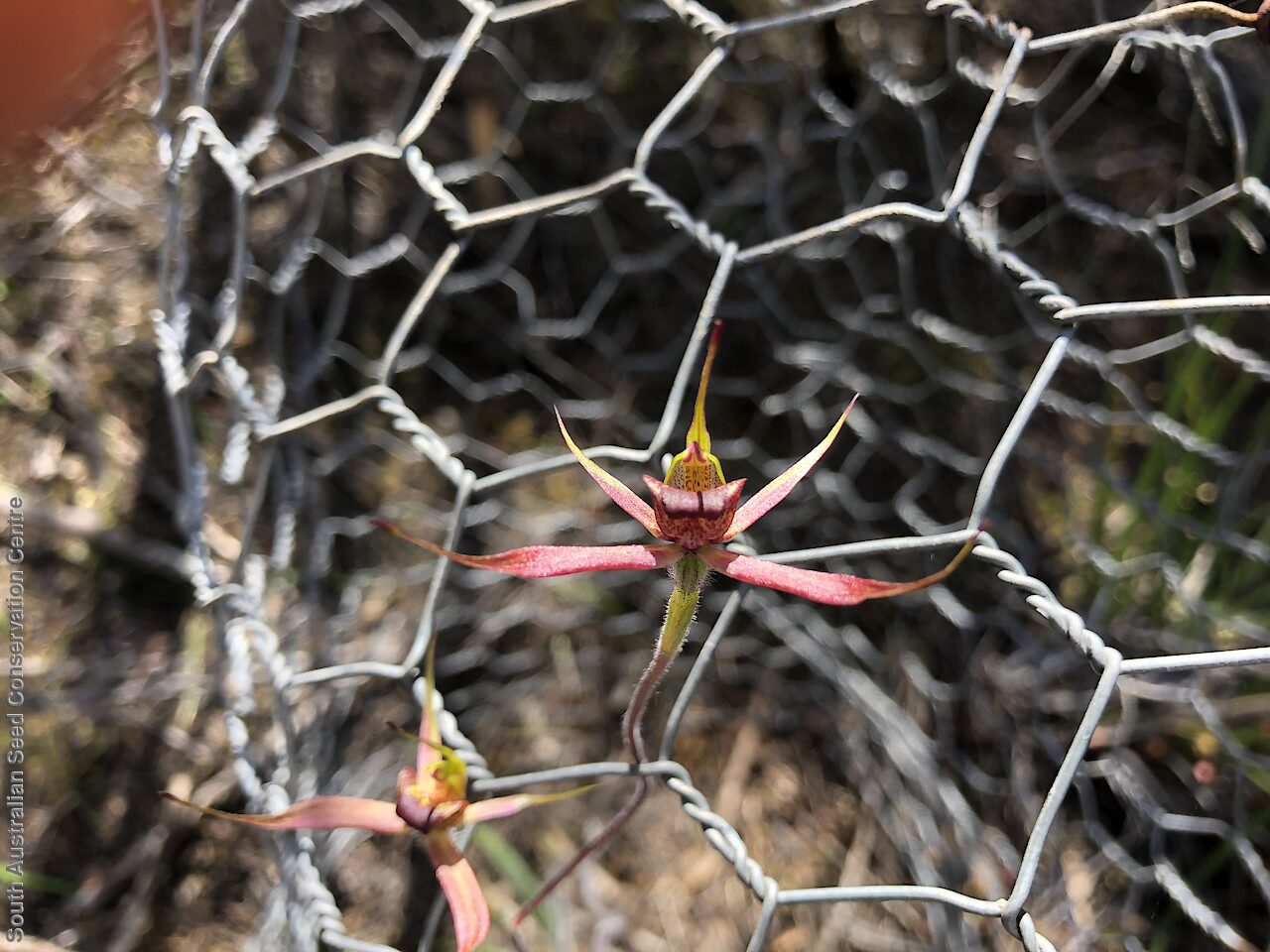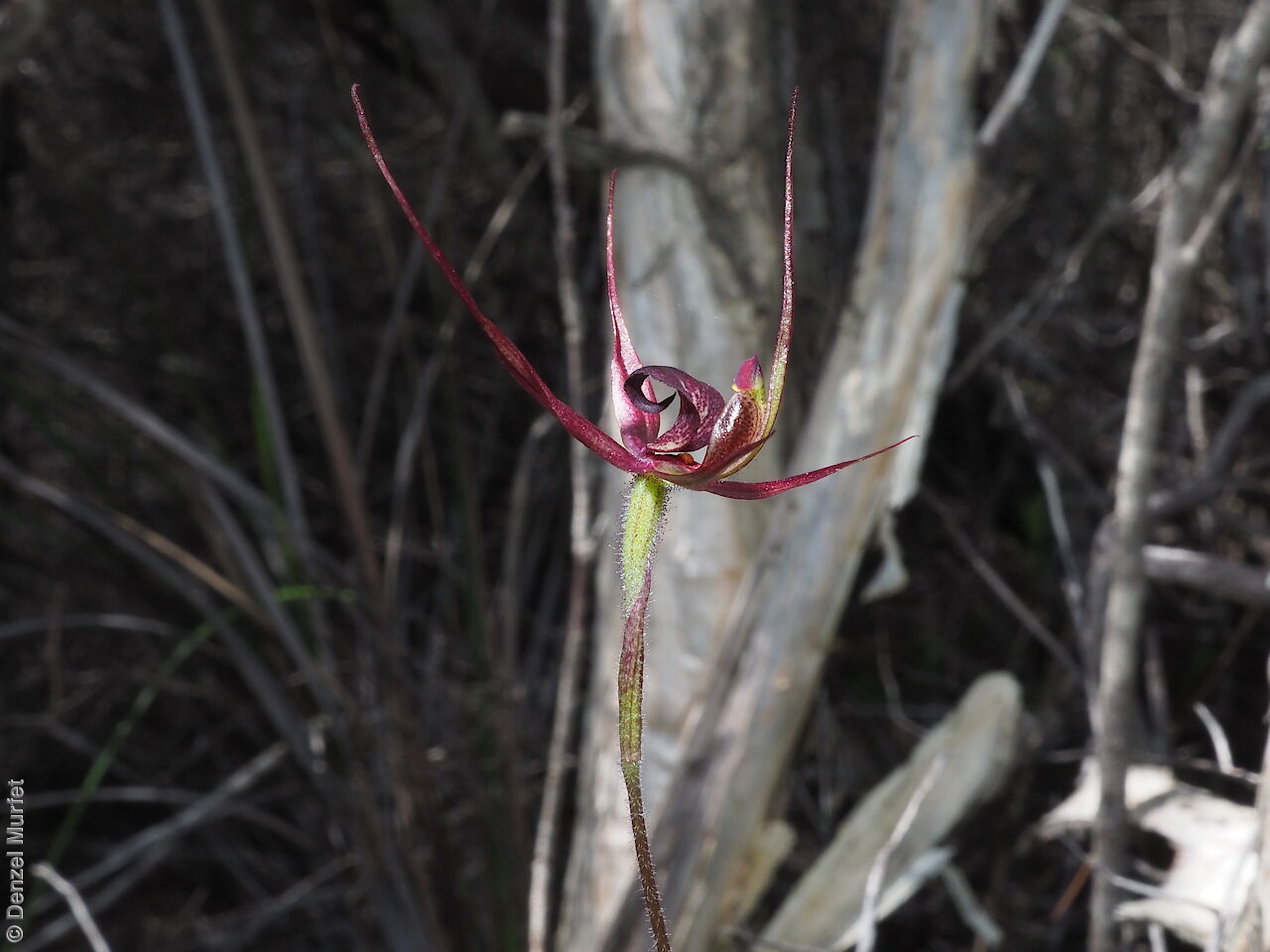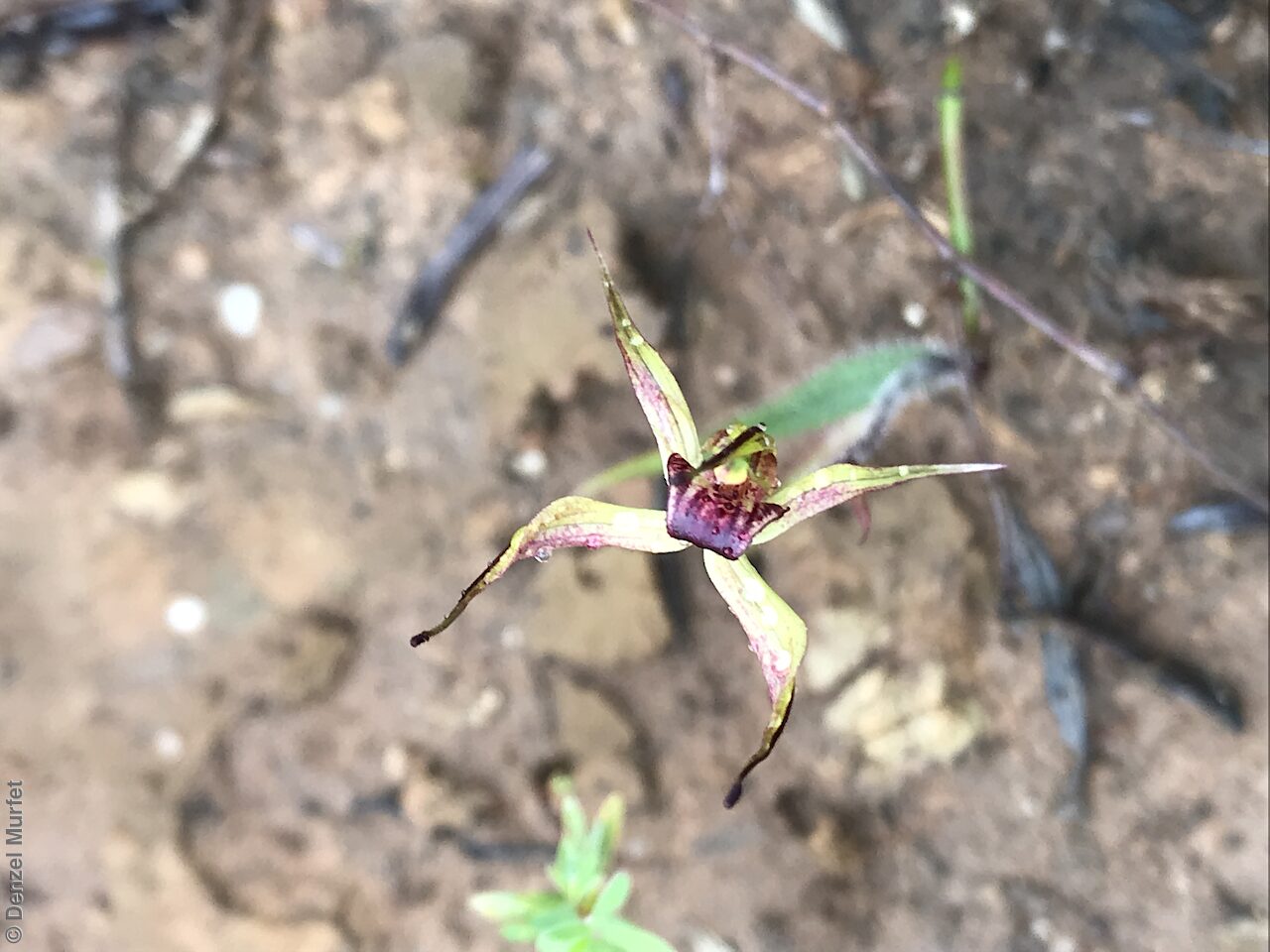

























Botanical art
Prior names
Arachnorchis ovata
Phlebochilus ovatus (amend.)
Phlebochilus ovata
Common names
Ovate Spider-orchid
Kangaroo Island Spider-orchid
Etymology
Caladenia from the Greek 'kallos' meaning beauty and 'aden' meaning a gland, referring to the colourful labellum and the glistening glands at the base of the column that are present in many of the species. Ovata from the Latin 'ovatus' meaning ovate, referring to the broadly ovate labellum, the most distinctive feature of the flower.
Distribution and status
Endemic to South Australia and restricted to Kangaroo Island and the bottom of the Fleurieu Peninsula, growing in open areas in scrubby heath and woodland on lateritic soils. Native. Endangered in South Australia. Vulnerable in Australia (EPBC Act).
Herbarium regions: Southern Lofty, Kangaroo Island
NRM regions: Adelaide and Mount Lofty Ranges, Kangaroo Island
AVH map: SA distribution map (external link)
Plant description
Annual terrestrial orchid to 30 cm high in flower with a single hairy leaf emerging in spring to 7 cm long. Inflorescence on a hairy slender stem with one (rarely two) red or maroon and sometime yellow flowers. Segments and sepals lanceolate, up pointing with tiny dark glands at the end. Labellum on a tremulous claw, broadly ovate, flat not lobed, margin entire or shortly dentate with its red tip rolled under. Flowering between September and October. Fruits are pale-brown hairy, papery ellipsoid capsule.
Seed collection and propagation
Collect seeds between late October and November. Collect fat capsules as they start to dry and turn brown. Pods will split and release the seeds quickly and will require monitoring. To increase the chances of collecting mature pods, it is recommended that a small breathable bag (ie. Organza bags) be used to enclose the developing capsules. Place the capsules in a container that will hold fine seeds and leave to dry for a few weeks or until the capsule split. Then carefully hold the capsule and tap it gently to release the seeds. Store the seeds with a desiccant such as dried silica beads or dry rice, in an air tight container in a cool and dry place, refrigerator or in liquid nitrogen.
Fire response
Obligate re-spouter and re-seeder.
Longevity: ?? years
Time to flowering: ?? years
Recovery work
In 2020-2021 this species was assessed post-fire in 1 year and 2 year old fire scars. A total of 676,500 seeds have been collected & banked for 2 populations inside the 2020 fire scar. Germination screening testing the response to fire cues will be undertaken in 2021. The project work is supported by the Australian Government through the Wildlife & Habitat Bushfire Recovery program through collaboration with La Trobe University.
| Location | No. of seeds (weight grams) | Number of plants | Date collected | Collection number Collection location | Date stored | % Viability | Storage temperature |
|---|---|---|---|---|---|---|---|
| BGA | 234,200 (0.083 g) | 9 | 12-Nov-2020 | Boat Harbor Track, Deep Creek Southern Lofty | 28-Jun-2021 | N/C | -18°C |
| BGA | 56,000 (0.020 g) | 5 | 14-Nov-2019 | Boat Harbor Road, Deep Creek CP Southern Lofty | 28-Jun-2021 | N/C | -18°C |
| BGA | 270,300 (0.096 g) | 14 | 6-Nov-2020 | Lashmars CP Kangaroo Island | 10-Aug-2022 | N/C | -18°C |
| BGA MSB | 137,600 (0.040 g) 277,300 (0.100 g) | 18 | 5-Nov-2020 | Beyeria CP Kangaroo Island | 10-Aug-2022 | N/C | -18°C |
| BGA | 301,000 (0.108 g) | 14 | 1-Nov-2021 | D.A.Young Kangaroo Island | 10-Aug-2022 | N/C | -18°C, -80°C |
| BGA | 341,800 (0.122 g) | 25 | 18-Nov-2022 | Beyeria CP Kangaroo Island | 21-Jun-2023 | N/C | -18°C, -80°C |
| BGA | 186,000 (0.066 g) | 6 | 18-Nov-2022 | Boat Harbor Track, Deep Creek Nu Southern Lofty | 21-Jun-2023 | N/C | -18°C |
| BGA | 467,900 (0.167 g) | 25 | 18-Nov-2022 | Lashmare CP Kangaroo Island | 21-Jun-2023 | N/C | -18°C, -80°C |
| BGA | 16,500 (0.006 g) | 1 | 7-Dec-2022 | Crossing Track, Deep Creek NP Southern Lofty | 21-Jun-2023 | N/C | -18°C |
Number of plants: This is the number of plants from which the seeds were collected.
Collection location: The Herbarium of South Australia's region name.
% Viability: Percentage of filled healthy seeds determined by a cut test or x-ray.